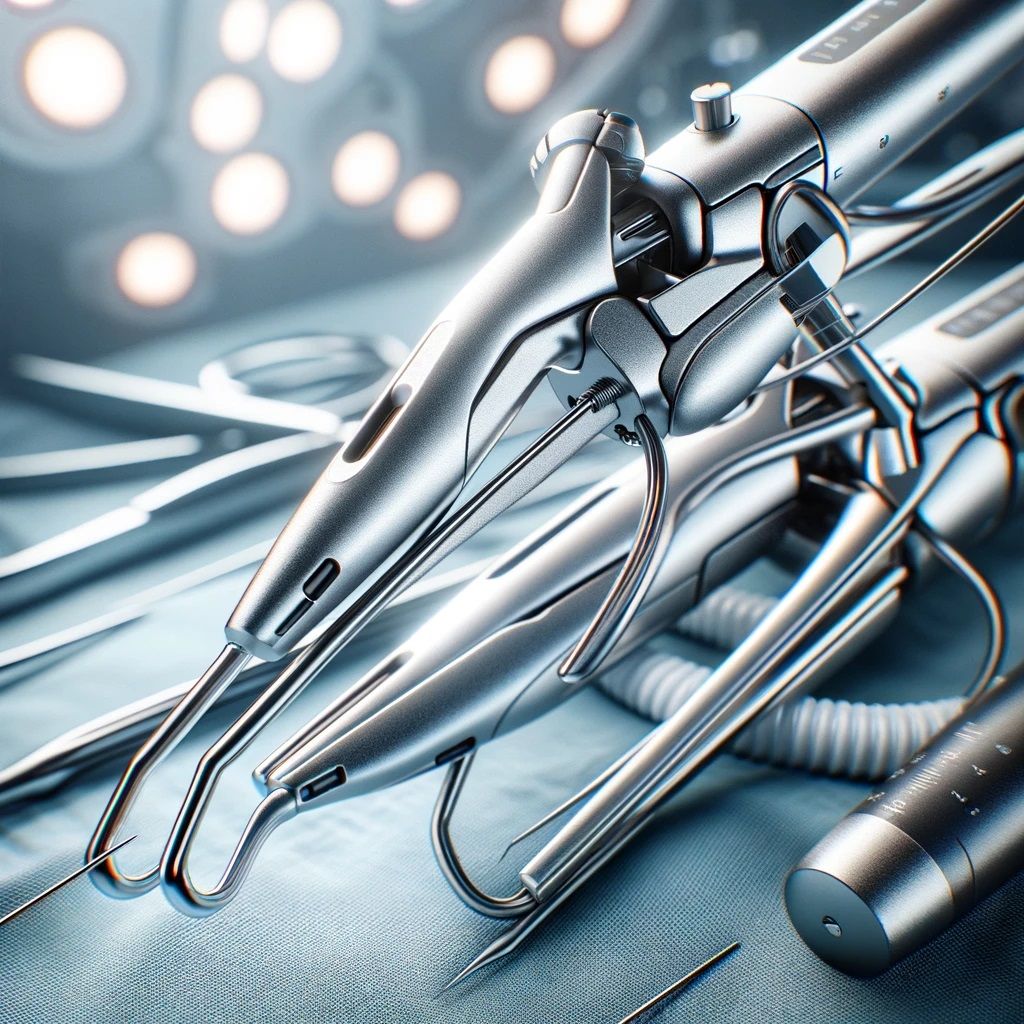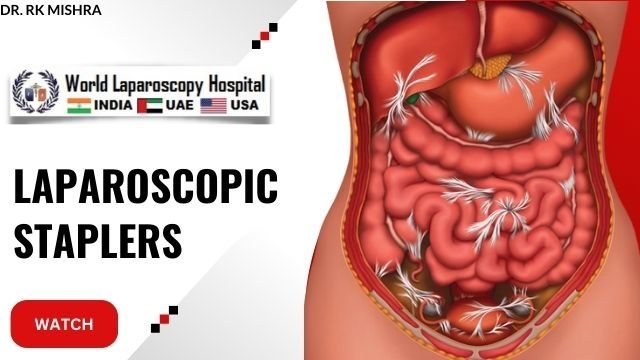Laparoscopic staplers market is experiencing strong growth
Laparoscopic surgical staplers are specialized medical devices used in laparoscopic surgeries, which are a form of minimally invasive surgery. Here's a detailed overview:
1. Design and Function: Laparoscopic staplers are designed for precision and ease of use in confined spaces within the body. They typically have long, slender shafts to allow surgeons to reach deep into the abdominal cavity through small incisions. At the tip, there's a stapling mechanism used for closing wounds or joining tissues internally, such as during bowel resections or lung surgeries.
2. Minimally Invasive Nature: Laparoscopic surgery involves making small incisions through which a camera (laparoscope) and surgical tools are inserted. The staplers used in these procedures are specifically designed to operate effectively through these small openings, minimizing tissue trauma and promoting faster patient recovery compared to traditional open surgeries.
3. Stapling Mechanism: These staplers deploy tiny staples made of medical-grade materials. They are used to close wounds or join tissues, such as in gastrointestinal or gynecological surgeries. The staples are applied in a way that ensures secure closure while minimizing the risk of infection and promoting healing.
4. Advantages: The use of laparoscopic staplers reduces the time required for certain surgical procedures and improves precision, particularly in hard-to-reach areas. This approach can also reduce post-operative pain, shorten hospital stays, and decrease recovery time.
5. Application Areas: Laparoscopic staplers are widely used in various surgical procedures, including bariatric surgery, colon resections, and hysterectomies, among others. Their ability to cut and staple simultaneously makes them especially valuable in surgeries requiring tissue resection and anastomosis (joining of two body parts).
Laparoscopic surgical staplers represent a significant advancement in surgical technology, reflecting the broader trend towards less invasive surgical techniques that benefit both patients and healthcare systems.
Laparoscopic surgical staplers, medical devices used to close skin wounds and join tissues like intestines and blood vessels, are gaining prominence due to their efficiency in replacing conventional suturing. The market for these staplers is growing, driven by several factors:

1. Rise in Minimally Invasive Surgeries (MIS): There's a growing preference for minimally invasive surgeries, which typically involve less pain, scarring, and quicker recovery. Surgical staplers, integral to these procedures, are therefore in higher demand.
2. Technological Advancements: Newer generations of surgical staplers can seal and cut tissues simultaneously, reducing procedure time. Innovations in stapler design are increasing their precision, speed, and consistency.
3. Increasing Surgical Procedures: With a rise in global surgical procedures, the need for efficient and effective tools like surgical staplers is surging. They're essential in various surgeries, including thoracic, gastrointestinal, bariatric, and hernia surgeries.
4. Material and Technological Improvements: Advances in materials, such as stainless steel alloys and polymers, and technology enhancements like cartridge-based staplers with variable firing forces, are making staplers more user-friendly and efficient.
However, the market faces challenges:
1. High Costs: Surgical staplers and their disposable components, such as reload cartridges, can be expensive. This cost factor is a significant barrier, especially in budget-sensitive regions.
2. Limited Reimbursement Policies: In some areas, the lack of adequate reimbursement for surgical staplers makes healthcare providers opt for conventional sutures or cheaper alternatives.
Despite these challenges, the expanding role of surgical staplers in minimally invasive procedures presents a significant opportunity for growth. Their importance in advanced techniques like laparoscopic and robotic surgeries is undeniable, offering precise tissue joining and consistent results. Manufacturers are also developing staplers compatible with these advanced techniques, further propelling market growth.
Top
1. Design and Function: Laparoscopic staplers are designed for precision and ease of use in confined spaces within the body. They typically have long, slender shafts to allow surgeons to reach deep into the abdominal cavity through small incisions. At the tip, there's a stapling mechanism used for closing wounds or joining tissues internally, such as during bowel resections or lung surgeries.
2. Minimally Invasive Nature: Laparoscopic surgery involves making small incisions through which a camera (laparoscope) and surgical tools are inserted. The staplers used in these procedures are specifically designed to operate effectively through these small openings, minimizing tissue trauma and promoting faster patient recovery compared to traditional open surgeries.
3. Stapling Mechanism: These staplers deploy tiny staples made of medical-grade materials. They are used to close wounds or join tissues, such as in gastrointestinal or gynecological surgeries. The staples are applied in a way that ensures secure closure while minimizing the risk of infection and promoting healing.
4. Advantages: The use of laparoscopic staplers reduces the time required for certain surgical procedures and improves precision, particularly in hard-to-reach areas. This approach can also reduce post-operative pain, shorten hospital stays, and decrease recovery time.
5. Application Areas: Laparoscopic staplers are widely used in various surgical procedures, including bariatric surgery, colon resections, and hysterectomies, among others. Their ability to cut and staple simultaneously makes them especially valuable in surgeries requiring tissue resection and anastomosis (joining of two body parts).
Laparoscopic surgical staplers represent a significant advancement in surgical technology, reflecting the broader trend towards less invasive surgical techniques that benefit both patients and healthcare systems.
Laparoscopic surgical staplers, medical devices used to close skin wounds and join tissues like intestines and blood vessels, are gaining prominence due to their efficiency in replacing conventional suturing. The market for these staplers is growing, driven by several factors:

1. Rise in Minimally Invasive Surgeries (MIS): There's a growing preference for minimally invasive surgeries, which typically involve less pain, scarring, and quicker recovery. Surgical staplers, integral to these procedures, are therefore in higher demand.
2. Technological Advancements: Newer generations of surgical staplers can seal and cut tissues simultaneously, reducing procedure time. Innovations in stapler design are increasing their precision, speed, and consistency.
3. Increasing Surgical Procedures: With a rise in global surgical procedures, the need for efficient and effective tools like surgical staplers is surging. They're essential in various surgeries, including thoracic, gastrointestinal, bariatric, and hernia surgeries.
4. Material and Technological Improvements: Advances in materials, such as stainless steel alloys and polymers, and technology enhancements like cartridge-based staplers with variable firing forces, are making staplers more user-friendly and efficient.
However, the market faces challenges:
1. High Costs: Surgical staplers and their disposable components, such as reload cartridges, can be expensive. This cost factor is a significant barrier, especially in budget-sensitive regions.
2. Limited Reimbursement Policies: In some areas, the lack of adequate reimbursement for surgical staplers makes healthcare providers opt for conventional sutures or cheaper alternatives.
Despite these challenges, the expanding role of surgical staplers in minimally invasive procedures presents a significant opportunity for growth. Their importance in advanced techniques like laparoscopic and robotic surgeries is undeniable, offering precise tissue joining and consistent results. Manufacturers are also developing staplers compatible with these advanced techniques, further propelling market growth.
